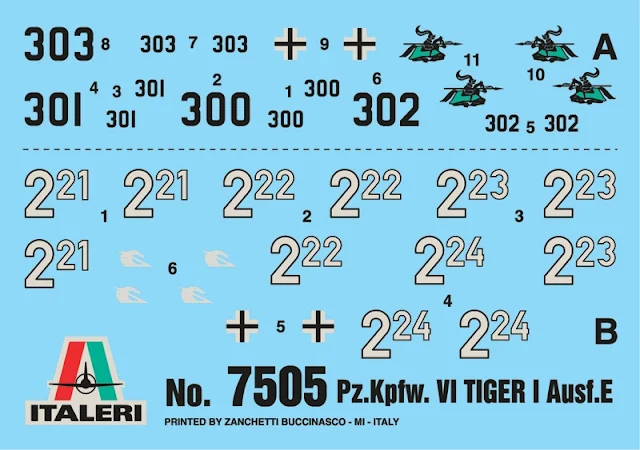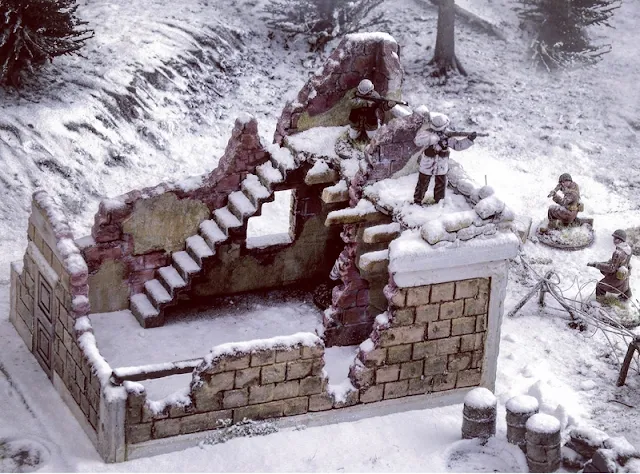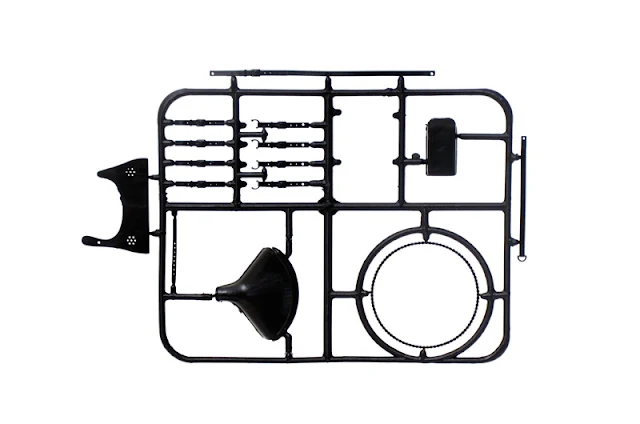Italeri has a
whole lot of really varied stuff for sale coming into the end of the year –
from a frozen battlefield to an Italian pop-gun, from a Swedish sleeper to a
British hell raiser and a German dreadnought. Let’s take a look at what’s new
from Italeri in November in today’s preview…
Italeri’s November 2015
new items
Kit no: # 6113
1/72nd
scale
Box Dim.: 440 x 270 x
70 mm
The Box Contains :
Wrecked house
Walls and ruins
Battlefield
accessories
German infantry: 24
figures - Winter uniform
U.S. infantry: 36 figures - Winter uniform
Sherman M4A3E2 Jumbo
Sherman M4A3 76mm
Pz.Kpfw. VI Tiger
Ausf.
Pak 40 AT Gun with 6
crew figures
8.8 cm Flak 37 AA Gun
Markings and decals for the vehicles and scenery are also included
On December 16th, 1944 the German Army launched through the
thick Ardennes forest (in Belgium) a great offensive which had the code name “Wacht am Rhein” (Literally – “Watch on
the Rhine”) - it is commonly known after
the war in the west as “The Battle of the Bulge”.
During this operation the town of Bastogne and its
surroundings where encircled by the German troops. Inside the pocket around
15.000 American soldiers stood up to the repeated assaults of the German army
for approximately ten days. The legendary resistance was that of the US 101st
Airborne division inside the town. On December 22nd the General von Lüttwitz
the German commander, submitted a demand for surrender to the encircled units.
The defiant answer of the encircled American commander in Bastogne, Brigadier
General Anthony McAuliffe was “NUTS”.
Then, Germans renew their attacks trying to occupy the city
but without getting results. On December 26th some soldiers of the General
George Patton’s Third Army reached the besieged troops, breaking the siege and
evacuating the wounded. The American Army lost more than 3.000 soldiers during
this battle.
This model kit contains everything you would need to
recreate this scene in 1/72nd including soldiers and their tanks, cannon
and the shelters and positions these soldiers were fighting in and from.
1/9th scale
Kit no: # 7402
Model Dim.: 23,1 cm
Box Dim.: 373 x 241 x
96 mm
At the start of the 2nd WW, Great Britain did not have all
the technical equipment needed for such a conflict, therefore a lot of vehicles
were ordered urgently. Motorcycles, mainly used by the well-known DR “Dispatch
Riders” for communication between different units, were converted from civilian
bikes with small changes, like military colour and the addition of frames for
the canvas bags. Triumph proposed in short time the model 3HW, based on the
civilian “Tiger 80”, with an overhead valve engine and parallel forks.
There are markings for four different bikes in
this kit on the decals sheet...
...as well as rubber tires and tubing with metal springs also included.
This model served on all fronts where the British Armed
Forces fought, such as Africa, Europe and Asia. After 2nd WW these motorcycles
were delivered to many other nations, such as Italy and Greece, where the
Triumphs served for a long time thanks to their reliability and robustness.
Kit no: # 3907
1/24th
scale
Upgraded Moulds
Model Dim.: 24 cm
Box Dim.: 373 x 241 x
96 mm
The Volvo FH range was introduced by the Northern European
Company in 1993 as the most updated solution to heavy road transportation
needs. During the time, Volvo FH has constantly been evolved and improved to
better respond to customer needs changes.
In 2001, the third generation of FH range was introduced on
the market. The main improvements have been done on the transmissions and
gearbox and on the adoption of new electronic systems to enhance the on road
performance, safety and drivability.
Great attention to the comfort on board thanks to the
adoption of a modern design new cabin. In particular, the “Sleeper Cab"
configuration was able to provide a very high standard for the rest of drivers
while not driving.
Kit no: # 502
1/720nd scale
Model Dim.: 26,0 cm
Box Dim.: 374 x 130 x
43 mm
In order to obey the regulations of the Treaty of Versailles
on the one hand, and to replace the outdated liners of the Braunschweig-class
at the same time, the Germans constructed a completely new type of vessel, the
so-called Panzerschiff (dreadnought). The basic concept of this endeavour was
to create a ship that would go faster than stronger units, and that would be
stronger than faster ones. As the third ship of this category, the Admiral Graf
Spee was launched in June 1934, and went into service in 1936. From 1936 to
1939 she was flag-ship of the fleet. Having been employed several times in
Spanish waters during the Spanish Civil War, the Graf Spee left Wilhelmshaven
for the South Atlantic, where she took up waiting position in summer 1939. At
the outbreak of the war she was engaged in economic warfare in the Atlantic as
well as in the Indian Ocean, sinking more than 50089 gross registered tons of
the enemy’s freighters.
Towards the end of 1939 the Graf Spee was engaged in battle
by the British cruisers Exeter, Ajax, and Achilles just outside the mouth of
the La Plata. During this battle the Graf Spee was badly damaged and had to
call at Montevideo. Upon British intervention, the government of Uruguay did
not grant them a stay long enough for the repair of the damages, though. And as
their retreat seemed blocked through a diversion of the British Intelligence
Service, orders were given to blow up the Graf Spee. Breaking up began in 1942;
the remnants of the wreck were still visible in the sixties.
Kit no: # 6122
1/72nd scale
Box Dim.: 220 x 150 x
30 mm
THE BOX CONTAINS 8 FIGURES + 1 GUN
These kits are now
available through Italeri’s distributors worldwide






























































